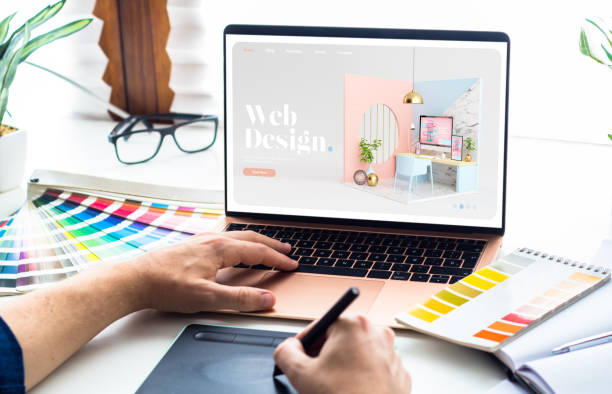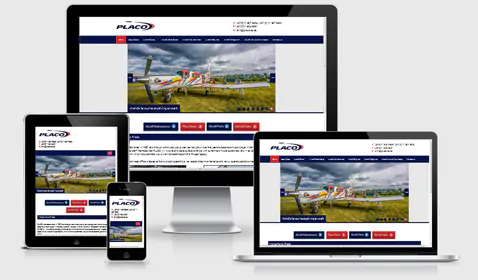Website Design Best Practices for Faster Load Times and Improved User Experience
Website Design Best Practices for Faster Load Times and Improved User Experience
Blog Article
Modern Site Style That Catches Interest and Transforms
In an increasingly digital landscape, modern website layout has arised as a crucial element in catching customer focus and driving conversions. As we check out these important elements, it comes to be clear that recognizing their interplay can dramatically influence a website's performance and user fulfillment.
Importance of Visual Power Structure
Visual hierarchy is an important component in internet site style, as it overviews users' focus and improves their general experience. By purposefully arranging web content, designers can direct customers to one of the most crucial details first, thereby increasing involvement and boosting usability. Reliable visual pecking order employs various strategies, including size, color, comparison, and spacing. Bigger components normally draw the eye, while contrasting shades can stress essential messages, making them stand apart among even more controlled elements.
Integrating a logical flow in web content arrangement is necessary; for circumstances, positioning the most vital details at the top of a web page cultivates immediate recognition. Constant usage of typography, such as varying font dimensions and designs, helps establish a clear content structure. This company not just help in navigation but likewise constructs trust, as users feel a lot more comfortable when they can easily find what they are trying to find.
Inevitably, a well-executed aesthetic pecking order not only improves aesthetic appeal yet additionally significantly impacts user actions. By prioritizing crucial elements and ensuring a smooth experience, developers can properly transform site visitors right into clients, enhancing the significance of this foundational design concept in modern website growth.
Responsive Layout for All Devices
Creating a smooth experience across various devices is crucial in today's electronic landscape, where customers gain access to web sites from tablets, smartphones, and desktops alike. Responsive design is a critical technique that makes sure internet sites adjust fluidly to different display resolutions, alignments, and sizes. By utilizing adaptable grids, pictures, and CSS media inquiries, designers can create layouts that preserve visual stability and capability, no matter of the device being used.
The value of receptive style expands beyond appearances; it directly affects customer engagement and conversion prices. A site that operates well on all gadgets motivates longer check outs and reduces bounce rates, as customers are most likely to connect with web content that is very easy to browse. Furthermore, internet search engine, particularly Google, focus on mobile-friendly sites in their positions, making receptive design an important part of search engine optimization (SEARCH ENGINE OPTIMIZATION)
Including receptive style not just enhances user experience however additionally simplifies the development procedure. By creating a solitary website that functions throughout devices, companies can conserve time and resources contrasted to creating different mobile and desktop computer versions. Inevitably, responsive layout is a fundamental technique for contemporary web site layout, guaranteeing availability and complete satisfaction for all individuals, no matter their tool.
Involving Interactive Elements
While a responsive layout lays the foundation for a useful site, integrating appealing interactive aspects is essential for capturing user focus and cultivating much deeper links. Website Design. Interactive components, such as computer animations, quizzes, and clickable infographics, develop a more dynamic customer experience, urging site visitors to spend more time on the site
Integrating interactive features can additionally lead customers with complex details, making it much easier to absorb content. For instance, interactive sliders can illustrate product variants, while embedded videos can provide presentations or testimonies that resonate greater than fixed pictures or text. In addition, gamification methods, like rewards for finishing jobs or engaging with material, can boost customer motivation and retention.
Reliable use of interactive aspects not just enhances the user experience but can likewise bring about greater conversion rates. By making interactions helpful and delightful, organizations can cultivate a sense of loyalty and depend on with their target market. It is necessary to stabilize interactivity with performance; extremely complicated functions may hinder website speed, adversely affecting individual satisfaction. Ultimately, integrating properly designed interactive elements can dramatically elevate a web site's efficiency, driving engagement and conversions in today's competitive digital landscape.
Streamlined Navigating Practices
Reliable navigation is a keystone of any type of effective web site, as it straight affects individual experience and material access. Streamlined navigation practices guarantee that users can conveniently situate details, improving their communication with the site. A well-structured navigating food selection must be straightforward and instinctive, commonly including a restricted number of key categories to stay clear of overwhelming visitors.
To attain structured navigation, designers should focus on a hierarchical framework that logically arranges material. Executing breadcrumb tracks can supply individuals with context about their present location within the site, enabling seamless backtracking. Additionally, using drop-down food selections can properly save area while still supplying access to subcategories.
Receptive design is crucial, as navigating must be functional throughout all devices (Website Design). Mobile individuals, particularly, take advantage of touch-friendly food selections and collapsible areas that maintain functionality without compromising aesthetics

Efficient Call-to-Action Methods
A well-crafted call-to-action (CTA) is necessary for assisting users towards preferred end results on a web site, as it encourages them to involve with content or purchase. To optimize their effectiveness, CTAs ought to be clear, engaging, and purposefully positioned throughout the site.
First, utilize action-oriented language that connects seriousness or worth, such as "Begin," "Sign up with Now," or "Insurance claim Your Price cut." This language not only inspires customers image source but likewise sets clear expectations concerning the following steps.
Second, think about style components; CTAs should stick out aesthetically through contrasting colors, adequate whitespace, and noticeable positioning. A button that is simple to see and click increases the probability of customer communication.
Additionally, personalizing CTAs based on customer actions or demographics can my company considerably improve involvement. Tailored messages reverberate extra with users, driving higher conversion rates.

Verdict
To conclude, modern-day internet site style stresses the integration of visual pecking order, receptive formats, involving interactive aspects, structured navigating, and effective call-to-action methods. These components collectively enhance individual experience, making his explanation sure that visitors stay involved and motivated to explore content additionally. By prioritizing these design concepts, organizations can significantly improve individual retention and conversion rates, ultimately resulting in greater success in the digital landscape. The constant development of web style highlights its critical role in effective online interaction and marketing.
In a significantly digital landscape, modern web site style has arised as an essential factor in capturing customer interest and driving conversions.Visual power structure is an essential component in web site design, as it overviews users' attention and boosts their general experience.The significance of receptive design prolongs past aesthetic appeals; it directly influences customer involvement and conversion rates.Including responsive design not only boosts individual experience but likewise streamlines the growth process. Eventually, receptive style is a fundamental method for modern website layout, making certain access and satisfaction for all individuals, no matter of their tool.
Report this page